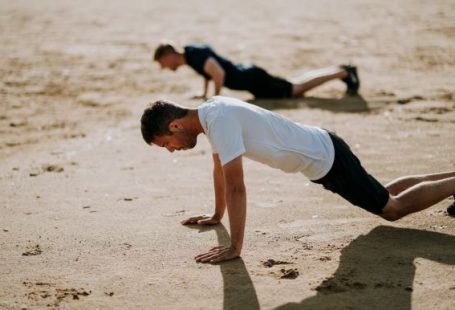Yoga has become increasingly popular in recent years, and for good reason. Not only does it offer a multitude of mental and physical benefits, but it also provides a holistic approach to wellness. One of the key advantages of practicing yoga is its ability to improve flexibility and strength. Whether you are a beginner or an experienced yogi, incorporating yoga into your fitness routine can help you achieve a more balanced and flexible body.
Enhancing Flexibility through Yoga
Flexibility is the range of motion in your joints and muscles. Many people mistakenly believe that they need to be flexible in order to practice yoga. However, yoga is actually a powerful tool for increasing flexibility. With regular practice, you will notice a gradual improvement in your range of motion.
Yoga poses, or asanas, are designed to stretch and lengthen the muscles, helping to improve flexibility over time. Poses like Downward-Facing Dog, Forward Fold, and Triangle Pose are particularly effective for targeting tight muscles and increasing flexibility in the hips, hamstrings, and spine. As you progress in your practice, you can challenge yourself with more advanced poses, such as King Pigeon or Standing Splits, which require greater flexibility.
Building Strength through Yoga
In addition to flexibility, yoga also helps to build strength. Unlike traditional strength training exercises that primarily target specific muscle groups, yoga engages multiple muscle groups simultaneously. This results in a more balanced and functional strength throughout the body.
Yoga poses that require holding your own body weight, such as Plank Pose and Crow Pose, help to build upper body strength. Standing poses like Warrior II and Chair Pose work the lower body, strengthening the legs and core. By incorporating both static and dynamic movements, yoga challenges the muscles in a unique way, promoting overall strength development.
The Mind-Body Connection
One of the distinguishing features of yoga is its emphasis on the mind-body connection. As you move through the various poses, you are encouraged to focus on your breath and be present in the moment. This mindfulness not only enhances the physical benefits of yoga but also helps to cultivate a sense of inner strength and resilience.
When you approach yoga with a calm and focused mind, you can better tune into your body’s needs and limitations. This awareness allows you to practice safely and avoid overexertion or injury. By listening to your body, you can make modifications or take rest when necessary, ensuring a sustainable and long-term yoga practice.
Incorporating Yoga into Your Routine
To reap the full benefits of yoga, it is important to make it a regular part of your fitness routine. Aim for at least two to three yoga sessions per week, ideally with a mix of both gentle and more challenging classes. If you are new to yoga, consider taking a beginner’s course or working with a qualified instructor who can guide you through proper alignment and modifications.
In conclusion, yoga is a powerful practice that can improve both flexibility and strength. By incorporating yoga into your fitness routine, you can experience the physical benefits of increased flexibility and balanced strength. Moreover, the mindfulness cultivated through yoga can enhance your overall well-being. So roll out your mat, take a deep breath, and embark on a journey to a more flexible and stronger you through the practice of yoga.





